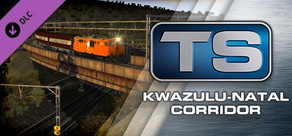Ericmopar wrote:From a technology standpoint, that gauge changing system is pretty cool. From a maintenance and (what can go wrong, will go wrong) standpoint, it's an accident waiting to happen, and a horrible increase in the number of moving parts that have to be maintained.
Very carefully maintained.
That was pretty much the way I saw it several years ago, when I first read about the concept in RGI. What's interesting aobut the way they implemented it is that the whole wheelset was designed to be dropped easity, with all the actual maintenance done on the workbench. Evidently, they've gotten excellent performance out of the system, running sets as far away as Zurich over some fairly high speed track. To be sure, the relatively light axle loading of a Talgo set probably helps with the overall longevity of the components. but even in a "worst case" scenario, such was we saw in the high speed wreck last year (admittedly a human failure as opposed to a technological failure), the equipment itself proved surprisingly crashworthy.
What intrigues me about a similar approach to the question of interchange between the Cape Gauge system and the meter gauge system in Mozambique is tat the horizontal travel of each wheel woul only be on the order of 1.32" (probably less than half of the width of the wheel hub), as opposed to the 4.75" for each whell in the conversion between Iberian broad gauge and standard gauge. It would seem to me to be possible to re-engineer the system into a less complex confguration, given the realtively short travel of the componenets and the operation at lower overall speeds, even if the axle loadings are substantially higher. The short travel would also make it easier to seal the whole mechanism from dirt, mositure and other potentially harmful contaminants. Given that a conventional dual gauge solution is probably impossible (the difference in gauge is probably less than the sum of the rail head and flangway width, for starters), and that a regauging program on the lines of what GWR did when they abandoned broad gauge is probably not a feasible solution under current conditions, it would be interesting to see whether they could work out an interim solution, and regauge the lines in Mozambique in an incremental basis.
I think this new route opens up a lot of possibilities we haven't yet seen in this hobby. Now I'm wondering whether somebody will tackle the proposed Garratt-Mallet (2-6-6-2+2-6-6-2) once proposed for the Cape Gauge system: http://www.beyergarrattlocos.co.uk/bgpix/sgng.jpg

